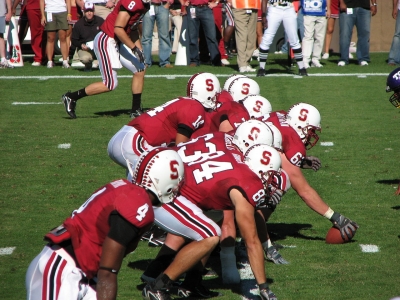By Mike Kuchar
Senior Research Manager
X&O Labs
Twitter: @MikekKuchar
Editor’s Note: The following research was conducted as part of XandOLabs.com special report on “Zone and Gap Runs from Unbalanced Formations,” which can be accessed in its entirety by clicking here.
Introduction
 We’ve found that teams that run gap schemes out of unbalanced sets do so because of two main reasons:
We’ve found that teams that run gap schemes out of unbalanced sets do so because of two main reasons:
- An extra player on the line of scrimmage creates and extra gap in the run game, one that a defense must account for. We’ve found that most four down teams that adjust with their front are susceptible to getting gashed in unbalanced sets because they can’t account for the extra gap.
- Using unbalanced sets to run down/down/kick out schemes allows you to bring a player from the other side of the line of scrimmage to be the kick out player in power. Now you have a puller and an extra kick out player to run the power scheme.
Stanford University is one of the teams that believe in creating an extra gap by bringing another offensive lineman into the gap. Stanford calls this personnel grouping "Balco" (named after the San Francisco area laboratory implicated in the MLB steroids scandal), which is used to bring a little more "juice" into its offensive system. Stanford will line up in a four-man surface in an "I" formation backfield and run its power scheme strong and weak. X&O Labs had the privilege of vising with the Cardinal’s former offensive line coach Mike Bloomgren who expounded on his double team progression when running its power scheme.








